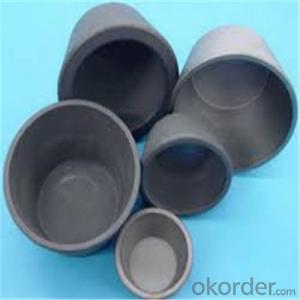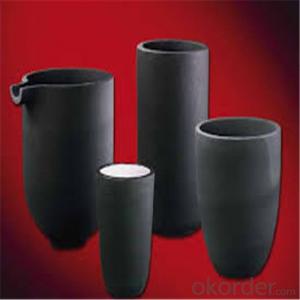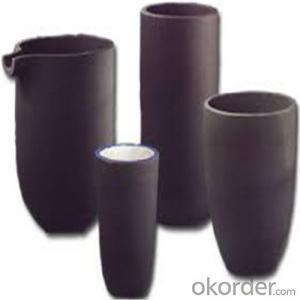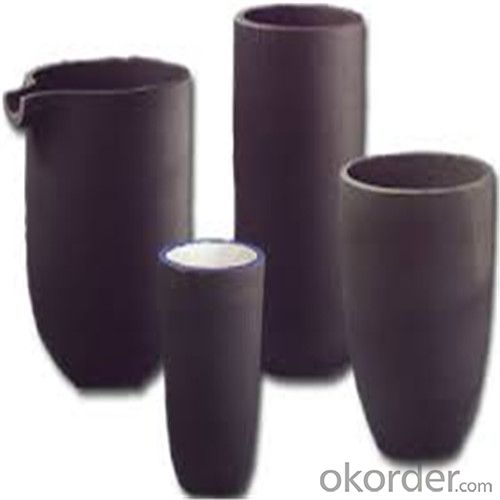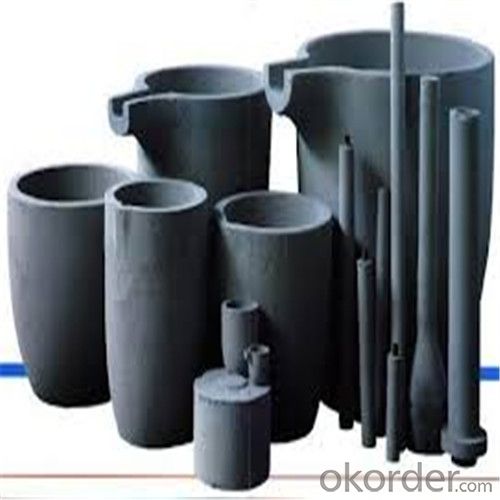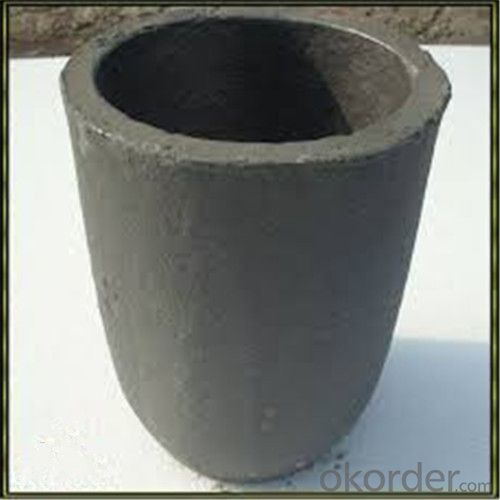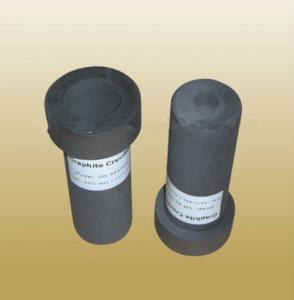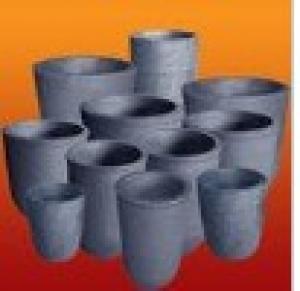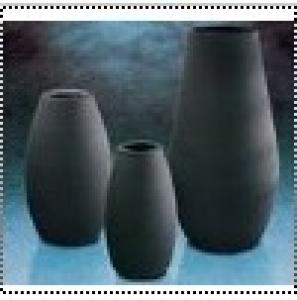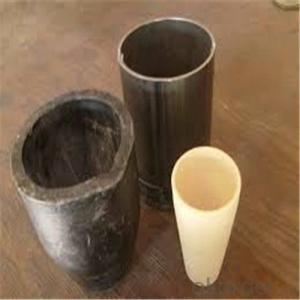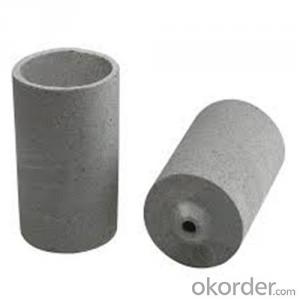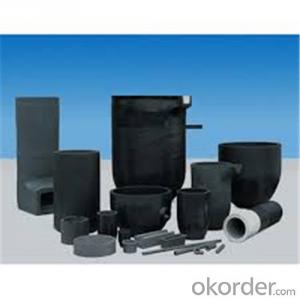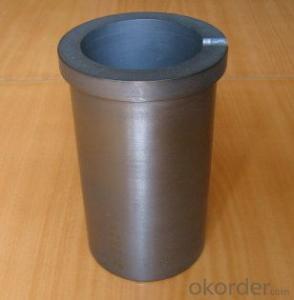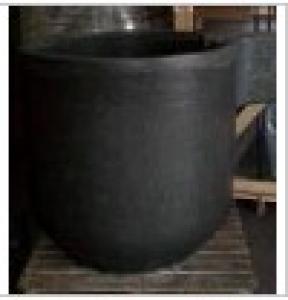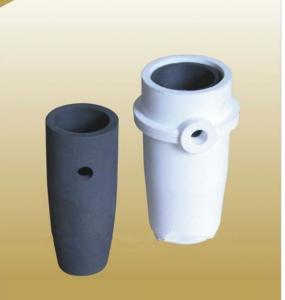Borax Graphite Crucible for High Heat Resistance Copper Melting
- Loading Port:
- Shanghai
- Payment Terms:
- TT OR LC
- Min Order Qty:
- 1 pc
- Supply Capability:
- 1000 pc/month
OKorder Service Pledge
OKorder Financial Service
You Might Also Like
Quick Details for SiC Crucibles For Melting Aluminium,Copper, Brass with High Heat Resistance
| Type: | High Strength, graphite crucible crucible | Application: | melting metal | Height: | as your requirements |
| Composition: | High Pure | Top Diameter: | 10-600mm | Bottom Diameter: | 10-1000mm |
| Place of Origin: | China (Mainland) | Brand Name: | Model Number: | ||
| Color: | Black grey | Si3N4%: | 5min | Fe2O3%: | 0.7max |
| C%: | 30-45 | Apparent porosity: | 30max | Refractoriness: | 1680 |
| Bulk Density: | 1.71min | Using life: | >5000 hours | MAX temperature: | 1600c |
Packaging & Delivery
| Packaging Details: | Seaworty packing or as per customer's detail requirement of graphite crucible. |
| Delivery Detail: | within 20-30 days after confirm order of graphite cru |
SiC Crucibles For Melting Aluminium,Copper, Brass with High Heat Resistance
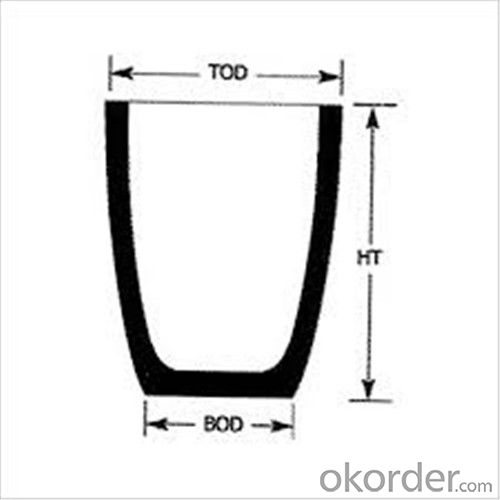

Features of SiC 95% silicon carbide sic crucible
1. resistance to deformation at high temperature,
2. thermal shock resistance, wear resistance, corrosion resistance.
3. anti-oxidation, anti- erosion.
Usage of SiC 95% silicon carbide sic crucible
electricity and steel slag trench,
coal chemical and mining transport pipeline.
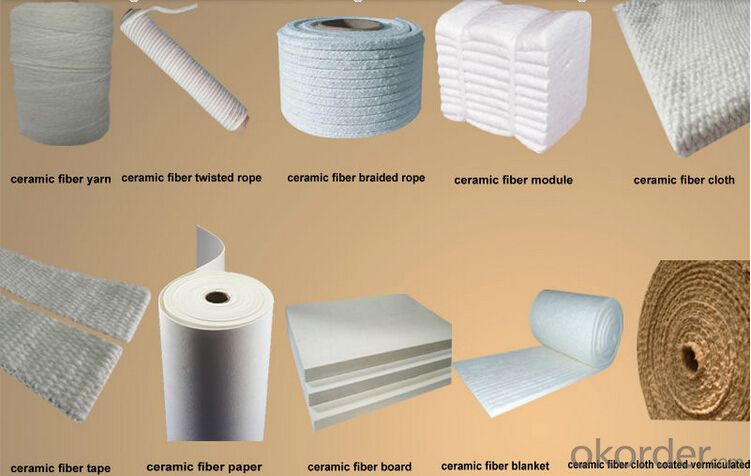
FAQ
1.What's your MOQ?
We will indicate the MOQ for each item in the quotation list. We accept the sample and trail order.
2.Can I negotiate the Prices?
Sure, we may consider discounts for bulk order of products.
3.How long will it take to complete my order?
For the stock items, we can arrange the shippment within 2~3days after received your payment. For the customized items, we will indicate the delivery time in the quotation list.
4.Can you give warranty of your products?
Yes, we extend a 100% satifisfaction guarantee on all items. Please feel free to provide timely feedback if you're not satisfied with N&D's Quality and Service. For the overseas orders, if there is a quality problem, please kindly to provide the picturers to show the problem by e-mail. We will provide the replacements to you at our cost according to actual conditions.
5.Can I visit you?
Sure. If you're a volume buyer and would like to visit our in-house products and production line, please contact us to make an appointment.
- Q: Can a graphite crucible be used for melting einsteinium?
- No, a graphite crucible cannot be used for melting einsteinium. Einsteinium is a highly radioactive element with a melting point of 860 degrees Celsius. Graphite crucibles typically have a maximum working temperature of around 3000 degrees Celsius, which is sufficient for most metal melting applications. However, einsteinium's extreme radioactivity poses significant health risks, and it requires specialized handling and containment procedures. Additionally, the properties of einsteinium make it highly reactive and corrosive, which can cause damage to the graphite crucible. Therefore, a graphite crucible is not suitable for melting einsteinium, and alternative materials and containment methods must be used.
- Q: Are there any safety precautions to take when using a graphite crucible?
- There are various safety measures that need to be taken into account when utilizing a graphite crucible. To start with, it is crucial to handle the crucible with caution and avoid any instances of dropping or striking it against hard surfaces. Graphite crucibles are relatively delicate and can easily crack or break if handled improperly, which could result in harm or equipment damage. Moreover, it is imperative that graphite crucibles are stored in a dry and clean area in order to prevent contamination or chemical reactions. Moisture or impurities can cause the crucible to deteriorate or react with the heated materials, compromising its reliability and potentially causing accidents or failures. In addition, it is of utmost importance to utilize appropriate personal protective equipment (PPE) when working with a graphite crucible. This includes wearing heat-resistant gloves, goggles, and a lab coat or protective clothing to shield against heat and potential splashes or spills. When heating or cooling the crucible, it is advised to do so gradually in order to avoid thermal shock. Quick temperature changes can lead to the crucible cracking or breaking, posing possible danger or damage. Furthermore, it is essential to be mindful of the materials being utilized in the crucible. Certain substances may produce toxic fumes or hazardous reactions when heated in a graphite crucible, thus proper ventilation and knowledge of the materials' properties are crucial. Finally, after usage, it is vital to allow the crucible to completely cool down before handling or storing it. Attempting to handle a hot crucible can result in severe burns or injuries. By adhering to these safety precautions, the likelihood of accidents, injuries, or damage when utilizing a graphite crucible can be significantly diminished, ensuring a safe and efficient working environment.
- Q: What's the difference between crucible furnace and non crucible furnace in die casting industry?
- From the way of heating, the crucible furnace has gas, fuel, electricity, coal, coke and so on. The life of the furnace crucible depends on the material.
- Q: How does the hardness of graphite affect the performance of a crucible?
- The performance of a crucible is significantly influenced by the hardness of graphite. Crucibles commonly employ graphite as it possesses a high melting point, chemical inertness, and thermal conductivity. Nevertheless, the durability and longevity of the graphite utilized can be greatly affected by its hardness. Graphite with greater hardness exhibits enhanced resistance to wear and tear, thereby reducing the likelihood of cracking or breaking under high temperatures or repeated use. This durability is critical in preserving the structural integrity of the crucible, as any damage can lead to contamination of the processed material or compromised containment of molten substances. Furthermore, a harder graphite crucible can effectively withstand thermal shocks. The heating and cooling cycles cause the crucible walls to experience thermal expansion and contraction, which can induce stress. A harder graphite material is less prone to significant dimensional changes, thereby minimizing the risk of cracking or warping due to thermal stress. Additionally, the hardness of graphite affects its ability to resist chemical attack. Although graphite is generally chemically inert, it can still be susceptible to certain chemicals or corrosive environments. A harder graphite material typically exhibits greater resistance to chemical reactions, providing superior protection against erosion or degradation caused by the processed material. Overall, the hardness of graphite directly impacts the crucible's performance by influencing its durability, resistance to thermal shocks, and ability to resist chemical attack. It is crucial to select a graphite material with suitable hardness to ensure optimal performance and longevity in various high-temperature applications.
- Q: Are there any specific storage requirements for graphite crucibles?
- Yes, graphite crucibles have specific storage requirements. They should be stored in a dry and cool environment to prevent oxidation and damage. It is essential to keep them away from moisture, direct sunlight, and extreme temperature fluctuations. Additionally, they should be stored in a clean area to avoid contamination from dust or other substances.
- Q: What are the differences between quartz crucibles and glass crucibles in appearance, properties, uses, etc.?
- What are the differences between quartz crucibles and glass crucibles in appearance, properties, uses, etc.?
- Q: Can graphite crucibles be used for crystal growth?
- Yes, graphite crucibles can be used for crystal growth. Graphite has several properties that make it suitable for this purpose. First, graphite has a high melting point, which allows it to withstand the high temperatures required for crystal growth. Second, graphite has good thermal conductivity, which ensures uniform heat distribution during the growth process. Third, graphite is chemically inert, meaning it does not react with most substances, which is important for maintaining the purity of the crystal being grown. Additionally, graphite crucibles are often used in crystal growth techniques such as the Czochralski method, where a seed crystal is dipped into a molten solution and slowly withdrawn to grow a larger crystal. In summary, graphite crucibles are commonly used and well-suited for crystal growth due to their high melting point, good thermal conductivity, and chemical inertness.
- Q: The use of earthy graphite?
- Wear resistant materials: graphite is often used as a lubricant in the mechanical industry. Lubricants can not be used in high speed, high temperature, high pressure conditions, and graphite wear-resistant materials can be at 200~2000 degrees Celsius temperature in a high sliding speed, without lubricating oil work. Many devices for conveying corrosive media are made of graphite materials, piston cups, seals and bearings. They do not need to be lubricated when running. Graphite is many metal processing (drawing, drawing) the good lubricant.
- Q: What are the technical specifications of graphite crucibles?
- Graphite crucible has the characteristics of high temperature resistance, large volume density, thermal shock resistance, corrosion resistance, acid and alkali corrosion resistance, high efficiency, energy saving, environmental protection, high efficiency, low loss and so on.
- Q: How is a graphite crucible used in the manufacturing industry?
- A graphite crucible is used in the manufacturing industry as a container for melting and holding high-temperature materials, such as metals and alloys. It is highly resistant to heat and chemical corrosion, making it suitable for various industrial processes like metal casting, melting, and refining. The crucible's ability to withstand extreme temperatures and its excellent thermal conductivity ensures efficient heat transfer, allowing for precise control over the manufacturing process. Additionally, graphite crucibles are durable and have a long lifespan, making them a cost-effective choice for industrial applications.
Send your message to us
Borax Graphite Crucible for High Heat Resistance Copper Melting
- Loading Port:
- Shanghai
- Payment Terms:
- TT OR LC
- Min Order Qty:
- 1 pc
- Supply Capability:
- 1000 pc/month
OKorder Service Pledge
OKorder Financial Service
Similar products
Hot products
Hot Searches
Related keywords
